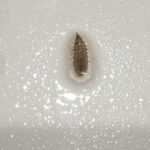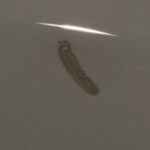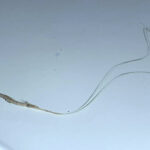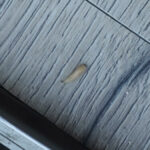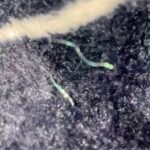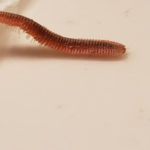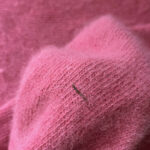The bristle worm belongs to the family Polychaete. The common name for the bristle worm is “Acropora Crab.” Bristle worms are usually found under rocks and corals in a number of different tropical areas around the world. Bristle worms can be found in other parts of the world as well. Bristle worms range in size from 1″ long up to a whopping 20″ in length. The vast majority of small bristle worms are an orange color and they can appear two-tone. Large bristle worms are usually gray or brownish in color. Some are also salmon pink with white setae around the body. Like most worms, bristle worms are nocturnal, so they are not usually around during the day.
Handling Bristle Worms
If you’ve ever handled a worm and at moment you touched it, small, sharp bristles shot out from it’s body, chances are you were handling a bristle worm. While most worms are harmless, the bristle worm is one of the most dangerous of all worm species. Bristle worms are elongated segmented worms, with bristles on each segment. Although bristle worms are dangerous, they are only dangerous when provoked. They bite when handled, and the bristles can penetrate the skin resulting in a sting that feels like fire. If you’re handling bristle worms for any reason, always wear gloves!
If you have been handling bristle worms and find that you have been stung once or multiple times, the folowing may occur:
- Burning at the wound site
- Inflammation
- Numbness
- Pain
- Redness
- Swelling
There are many ways to treat a bristle worm bite or sting, including:
- Apply vinegar (topical acetic acid) or isopropyl alcohol.
- Remove the bristles with tweezers or adhesive tape. Ouch!
- Take 1-2 acetaminophen every 4 hours and/or 1-2 ibuprofen every 6-8 hours for pain.
- If severe inflammation and a burning sensation develop, apply hydrocortisone cream 3 times per day.
- If pus, redness, or heat are present, these are signs of infection. Apply topical antibiotic ointment.
To prevent infection, you should talk to your doctor about taking antibiotics. A doctor will recommend the right antibiotic. If infection develops, continue antibiotics for at least 5 days after all signs of infection have cleared. Certain antibiotics cause sensitivity to the sun, so use a sunscreen with a minimum SPF 15.
All About Worms is always free, always reader-supported. Your tips via CashApp, Venmo, or Paypal are appreciated! Receipts will come from ISIPP Publishing.



